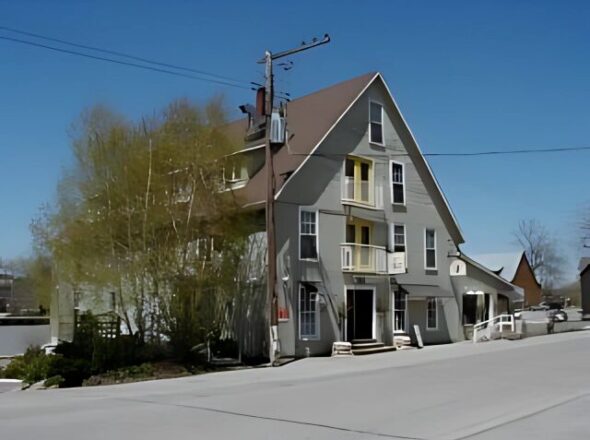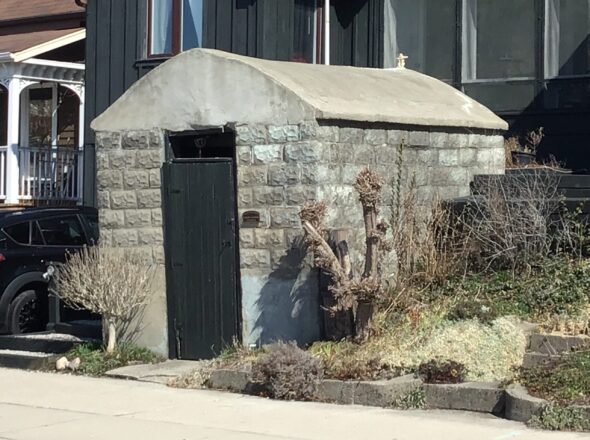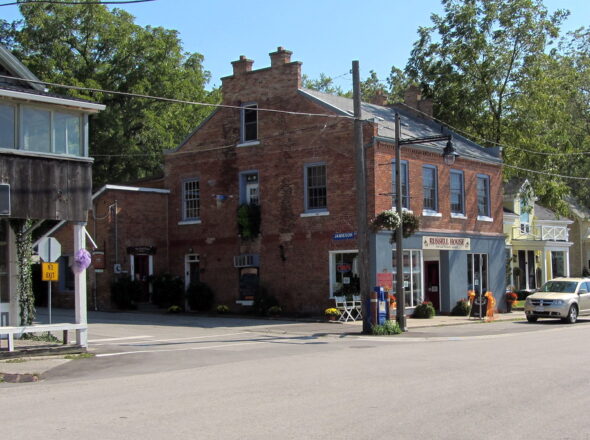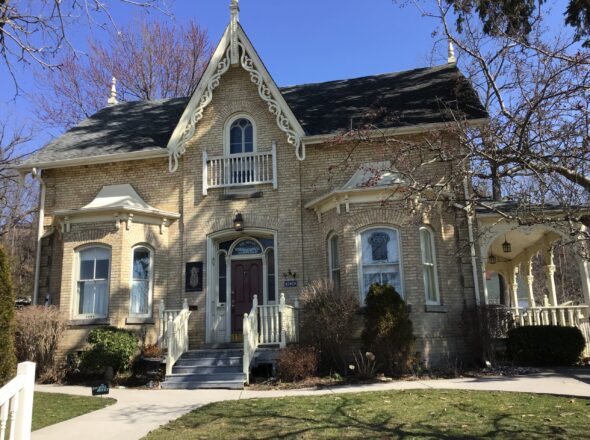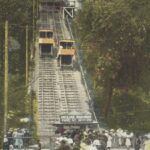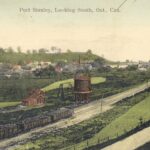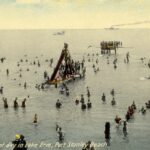This whimsical building may be the oldest structure in the village, and has been a livery,a confectionary shop, aretail store, and temporarily the Village Hall. Its large display windows in the front, distinctive features, and main location has always kept the Livery Stable at the hub of village life.
This unique structure was built in 1896 by J. A. Robinson of St. Thomas. It was designed by renowned St. Thomas architect J. Z. Long as a club house for a development on Hillcrest. Hillcrest was also known as Liberty Hill and this development was one of the earliest resort developments in Port Stanley. The building has a hip roof that is shingled with cedar shakes. It also features two gables facing east and west with a dormer window in their center. It is a one and a half story structure with a full basement accessible from a ramp on the north side and has a garage style opening that would accommodate large deliveries and vehicles.
The building was constructed circa 1917 by the East Side Fish Company, although it was not completed until after the fishing industry began to decline. It was never used as a fishery but served for net mending and storage. The symmetrical design and the number of windows provide east, south and west exposure to both natural light and the sun's heat in a large structure that was originally heated only by small coal stoves.
Built circa 1915 during the boom of the fishing industry, the cork kiln was important for the drying of the cork used for floating fish nets. The kiln was built into the side of the hill as a natural way to maintain dry heat.
The Russell house was built in the early 1870s of locally made strawberry bricks by a newly arrived settler, John Sweeney. It was one of the first hotels in Port Stanley, and one of a number of similar inns required in the early days of lake, rail and stagecoach travel. Over the years it has served as butcher and plumbing shops, and doctor's, lawyer's and insurance agent's offices. The building later became the Sterling Bank, and several staff members lived in rooms on the second floor. One of these staff included a young banker named Mitchell Hepburn, who later became Premier of Ontario.
The Payne House was built in 1873 by Manuel Payne on the site of Col. John Bostwick's residence, and encompasses its original foundation. Built of yellow brick in the early Victorian style, it mixes the gables of Gothic Revival and the bay windows and quoining of the Italianate style. Manual Payne was a railway agent, telegraph and telephone operator, customs officer, express agent, issuer of marriage licenses, and the first postmaster of the village.
- 1
- 2



